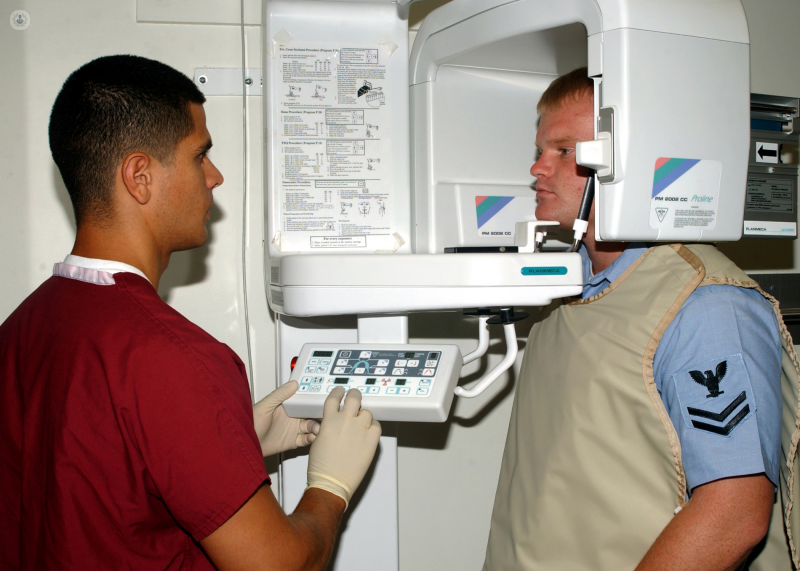Orthopantomography, also known as an OPG X-ray (or simply OPG), panoramic radiography, or a pantogram is a type of X-ray scan that gives a panoramic or wide view of the lower face. It can display all the teeth on both jaws on one film, including those that have not surfaced or erupted yet, such as wisdom teeth. It also offers a view of the jawbone and the temporomandibular joint (TMJ), which connects the jaw to the rest of the skull.
An OPG is an X-ray of the lower face. Like all X-rays, it involves using short blasts of low-level radiation to create images of inside the body – in this case, of the bones and teeth.
The procedure for dental panoramic radiography consists of the patient resting their chin on a small shelf in front of the X-ray machine and biting softly on a sterile mouthpiece. This will keep the head and mouth steady while the images are taken.
The panoramic X-ray machine consists of a rotating arm with the X-ray source at one end and the film mechanism (which captures the image) at the opposite extremity. The arm rotates around the patient’s head to capture the wide view of their mouth and jaw.
The procedure is performed very quickly. As with any X-ray, the patient feels no discomfort during the procedure and can continue with their daily routine afterwards.

Orthopantomography is a technique used in dentistry to allow the dentist to view all their patient’s teeth and determine their number, position, and growth, including those that have not yet erupted. An OPG X-ray might be done to plan orthodontic treatment, to detect the presence or asses the development of wisdom teeth, to examine the jawbone, or for a general overview of the patient’s dental health.
As with all X-rays, you will be ask to remove any jewellery, glasses, or other metal objects before the scan, as they can affect the images.
Dental X-ray technology is currently moving away from traditional film technology to digital X-ray technology, using electronic sensors and computers to create images. Digital X-rays allow instant review of the scans without having to wait to develop the film. They are also more efficient at getting high-quality images first time, reducing the number of repeat scans necessary, and therefore reducing the patient’s exposure to radiation.